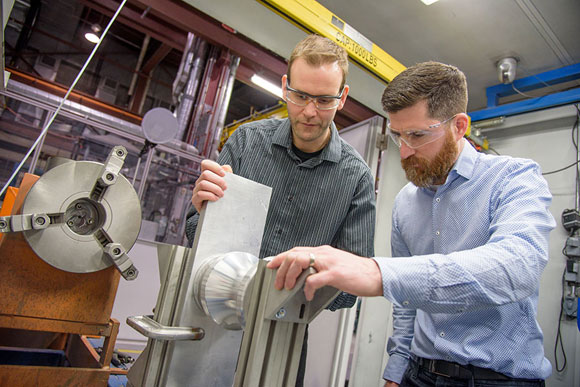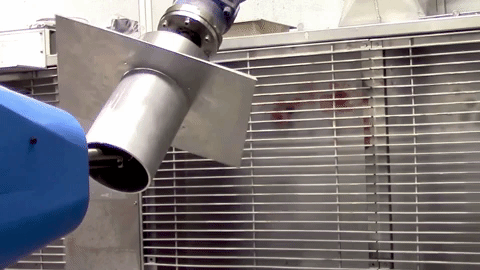A new metal 3D printer developed by scientists at the National Research Council of Canada (NRC) has created high-performance magnets using cold spray additive manufacturing.
The 3D printed magnets, manufactured by Fabrice Bernier and Jean-Michel Lamarre at the NRC laboratory in Boucherville, Quebec, will be used to enhance the design of electric motors.

3D printing a magnet with cold spray
Cold spray additive manufacturing involves the acceleration of metal powder particles with a high-velocity supersonic gas jet. The particles are fired at a substrate layer and behave as a liquid on impact through a process called plastic deformation. After impact the particles cool rapidly, forming an atomic fusion bond. The layers build up into an object.
As recently reported, Singapore Polytechnic will use a LightSPEE3D cold spray additive manufacturing system to research faster metal 3D printing, while GE has combined cold spray 3D printing and AI to repair precise breakages and faults in metal components.
At the NRC, Bernier and Lamarre fired particles from a Neodymium-Iron-Boron (NdFeB) powder mixture at the interior surface of a metal cylinder through a Plasma Giken 800 gas jet at a maximal pressure of 5MPa. A protective cold spray Aluminium layer was then added on top.
An industrial robot was used to control the deposition of the cold spray into a spiral form optimized for a magnet. Through this process, several kilograms of magnets were manufactured per hour.

The advantages cold spray additive manufacturing
Standard manufacturing techniques for high-performance magnets used in electric motors are powder compaction and injection molding. After fabrication, these magnets are shaped and then glued or assembled into the final product.
The cold spray process of 3D printing magnets combines fabrication, shaping, and adhesion, while the absence of polymer in the material matrix gives the magnet stronger intrinsic mechanical and conductive properties. Additionally, the magnets are corrosion and oxidation resistant and will have a longer lifespan.
According to Bernier,
“this technology will allow the creation of more compact, better performing motors for the future and could pave the way for building entire motors using cold spray technology, offering significant advantages such as cost reduction, better thermal management and more complex geometries and functionalities.”
The NRC scientists will now look at how cold spray 3D printed magnets may be used in magnetic cooling, wind turbines, and even telecommunication devices.
Let us know if this is an outstanding application of additive manufacturing. Make your nominations for the 3D Printing Industry Awards 2018 now.
Subscribe to our free 3D Printing Industry newsletter, follow us on Twitter, and like us on Facebook.
Featured image shows Bernier and Lamarre with the metal cylinder and 3D printed magnet spiral inside. Photo via NRC.

